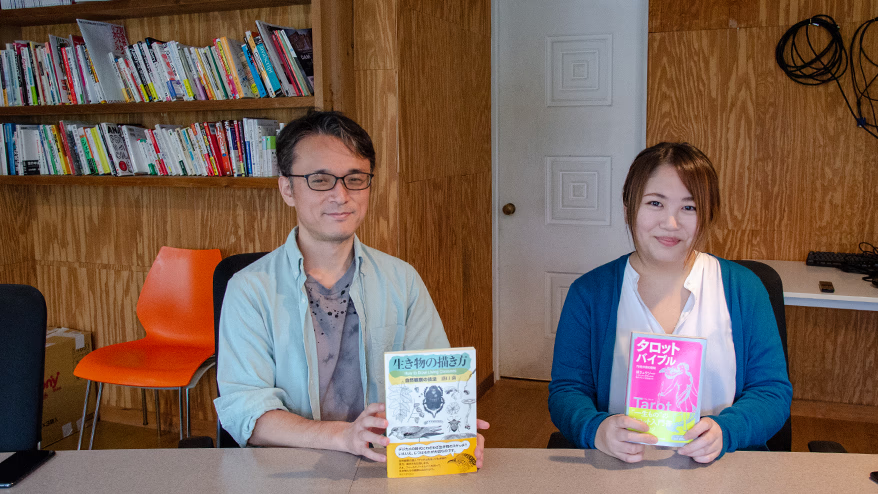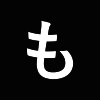The scorching hot summer of the last Heisei era is over, and autumn is definitely in the air.
This month, we didn't set a particular theme and we all brought our recommended books. We had a reading group during a rainy lunch break, taking a break from work. Two of the regular members of the reading group brought books about things they're both obsessed with at the moment. Each person will have five minutes to introduce the book.
Now, let's start the reading group.
Books to be introduced this time
- Mitsuru Moriguchi (author) "How to Draw Living Creatures: Techniques for Observing Nature" University of Tokyo Press
- "Tarot Bible" by Rachel Pollack (author) and Ryuji Kagami (editor) Asahi Shimbun Publications
Sketches depicting the "life" and "history" of living things
"How to Draw Living Creatures: Techniques for Observing Nature" by Mitsuru Moriguchi
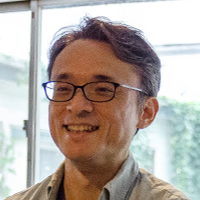
- Introduced by: Isamu Murakami
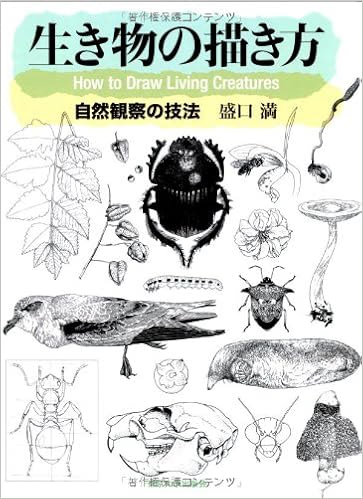
Moriguchi Mitsuru (author) "How to Draw Living Creatures: Techniques for Observing Nature" University of Tokyo Press (2012/12/12) ( Amazon )
It's a book on how to draw living things, and I found it at the National Museum of Nature and Science in Ueno.
This is the same author as the book on lichens that I introduced last time . This author also draws illustrations, but in this book he introduces how to actually draw living things. Living things are wide-ranging, and he sketches a variety of things, including insects, flowers, mushrooms, birds, and moles.
It also describes how to draw in different situations, such as when drawing outdoors and when drawing at home using things you have collected, how to choose paper, pens, and tools, and the steps to follow when drawing. It shows you how to draw from a rough sketch, through inking, and adding shading, making it easy to understand the specific details. It also includes actual drawings.
What I found fascinating was that sketching is like drawing a cross-section of the "life" and "history" of a subject. "Life" is what kind of ecology the creature has, what it eats and where it lives. "History" is how the creature evolved. For example, the changes in plants that have been bred through interaction with humans are also part of the creature's history. This book made me realize that by sketching things that we usually just look at casually, we can learn more about them in detail and gain a new way of looking at things.
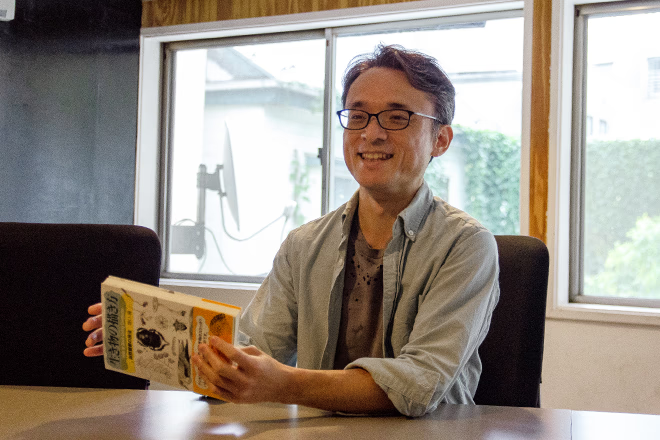
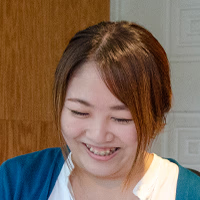 Dry
DryMr. Murakami, you really love living things and plants.
 Murakami
MurakamiThis book says that people who have a special interest in living things, whether they are professionals or not, are called "living things lovers," but I'm not sure if I am a living things lovers. When I was little, I used to catch crayfish and cicadas and keep stag beetles, but now I can't even touch a caterpillar. But I'm still very interested.
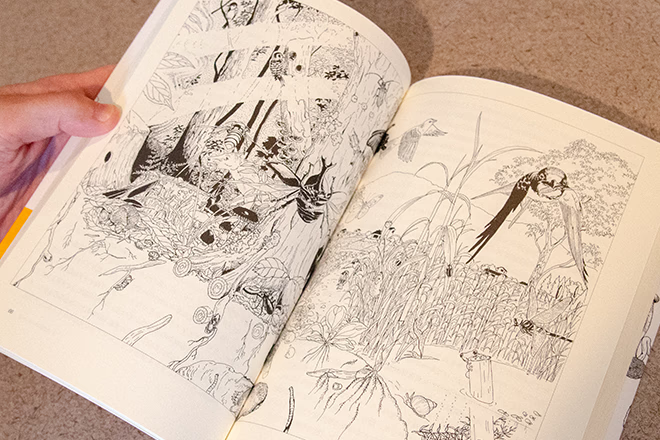
 Dry
DryWhat is this picture made with?
 Murakami
MurakamiHe seems to draw using a pencil and a drawing tool called a Rotring . He seems to use a few different tools. Now that I can take photos with my iPhone, I don't have any plans to draw, but if I get bored of photos, the day may come when I start drawing.
The key is to be able to decipher the story from the cards.
"The Tarot Bible" by Rachel Pollack (author) and Ryuji Kagami (editor)

- Introduced by: Qian Yahu
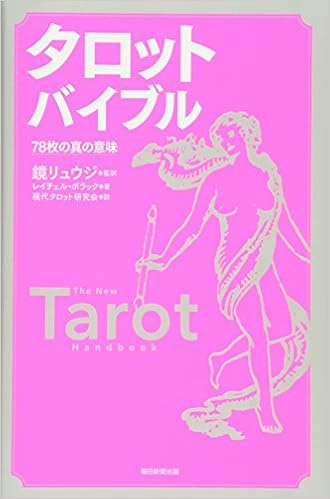
Rachel Pollack (author) "The Tarot Bible" Asahi Shimbun Publishing (2012/12/7) ( Amazon )
I recently started learning tarot. I was originally interested in it, but two months ago I went to a tarot fortune teller and was told, "You're suited to tarot, so you should try it. I'll teach you," and he gave me a rough guide on how to do it. Now I can do a little fortune telling while looking at this book.
The history of tarot is written in the beginning, and it seems that tarot cards originated in 15th century Italy, and were originally a normal card game. In the early Renaissance and 19th century, they were integrated with scholars and Christian mysticism such as horoscopes, and a man named Arthur Edward Waite created the format that is closest to the present day format. It is called the Waite version, and has a familiar design to anyone who has seen a tarot card.
Tarot readings involve shuffling the cards and reading what you want to know from the card that is drawn. Some people may think that it's just a random card, but it's actually quite accurate. Psychologist Jung also studied synchronicity, or meaningful coincidences, and didn't see it as just a coincidence. People have a subconscious and a conscious mind, and it's said that what comes out of the tarot is accurate because it reflects the subconscious part of the person. I'm still learning though.
This is the card called "Strength." It has a picture of a woman and a lion. It can be interpreted in many ways, such as gentle strength, calm strength, or someone who likes animals. I like the picture on the card because it is cute.
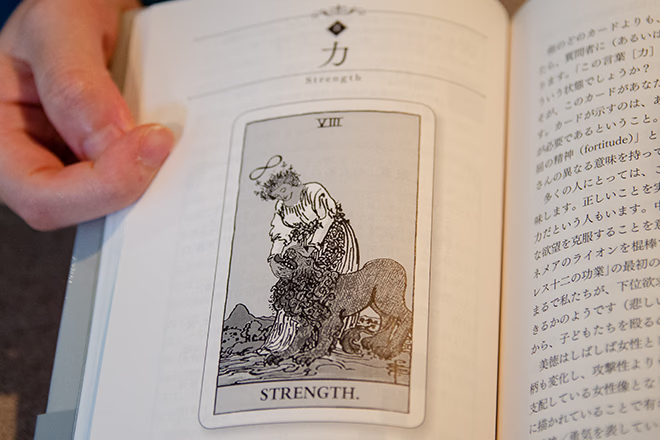
Tarot cards are chosen from multiple cards and a story is read into the cards.
Although there are some cards like "Death" and "Devil" that may seem scary at first glance, they often do not have negative meanings, such as a big change coming up or the disappearance of past fears and anxieties, and are surprisingly warm-hearted in telling you about the future. Even if you don't do fortune telling, I think this is an interesting book to just read.
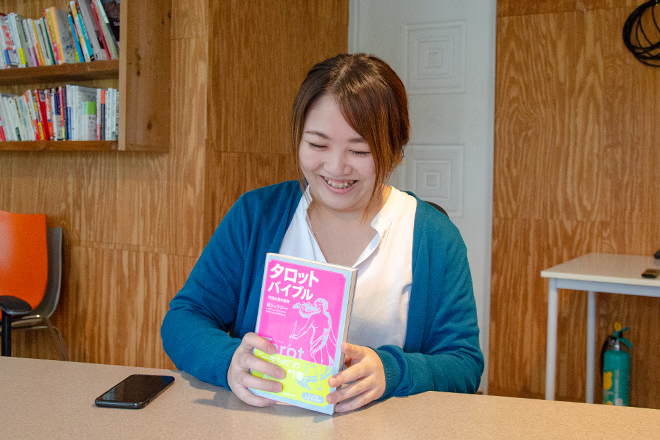
 Murakami
MurakamiI never knew there were 78 tarot cards.
 Dry
DryThey are divided into Major Arcana and Minor Arcana, and I am currently using only the 22 cards of the Major Arcana.
 Murakami
MurakamiYou read a story from the cards that come out, but does the way the story is created differ depending on the fortune teller?
 Dry
DryThat's right. I think that's what makes the difference between a fortune teller who is right and one who isn't. Inspiration and prior consultation are important.
For example, if you take an exam and you pass, the way you read it will change depending on whether you ask about it beforehand, such as whether it's your first exam, whether you've studied properly, whether it's a qualification that will be useful in your future work, etc. It's a bit like a medical interview at the hospital. It's not that the answer you get is "correct" - communication is key. It's pretty accurate! I have a card for you today, so shall I tell you your fortune?
 Murakami
MurakamiA medical questionnaire, I see.
Hmm...I'm fine today.
After the reading group
The reading group brought along reading material on a free theme. There was a book about how you can learn more about plants and animals by drawing living things, and a tarot card deck with 78 cards that tell the future. It was a book that deepened my interest.
The next issue will have a theme that is a staple of autumn: food. See you next time!
